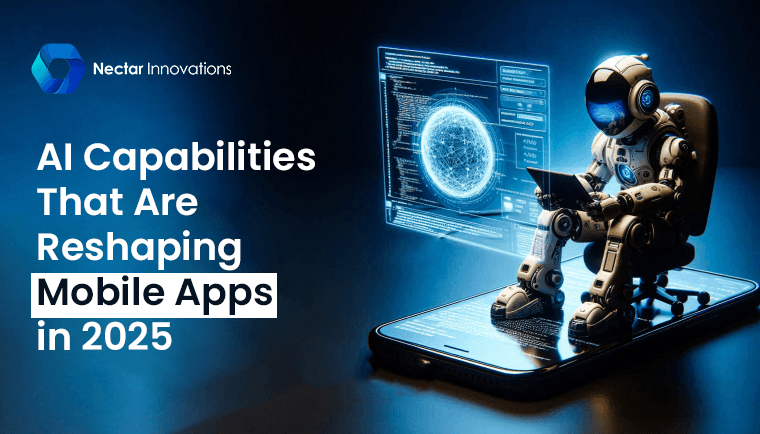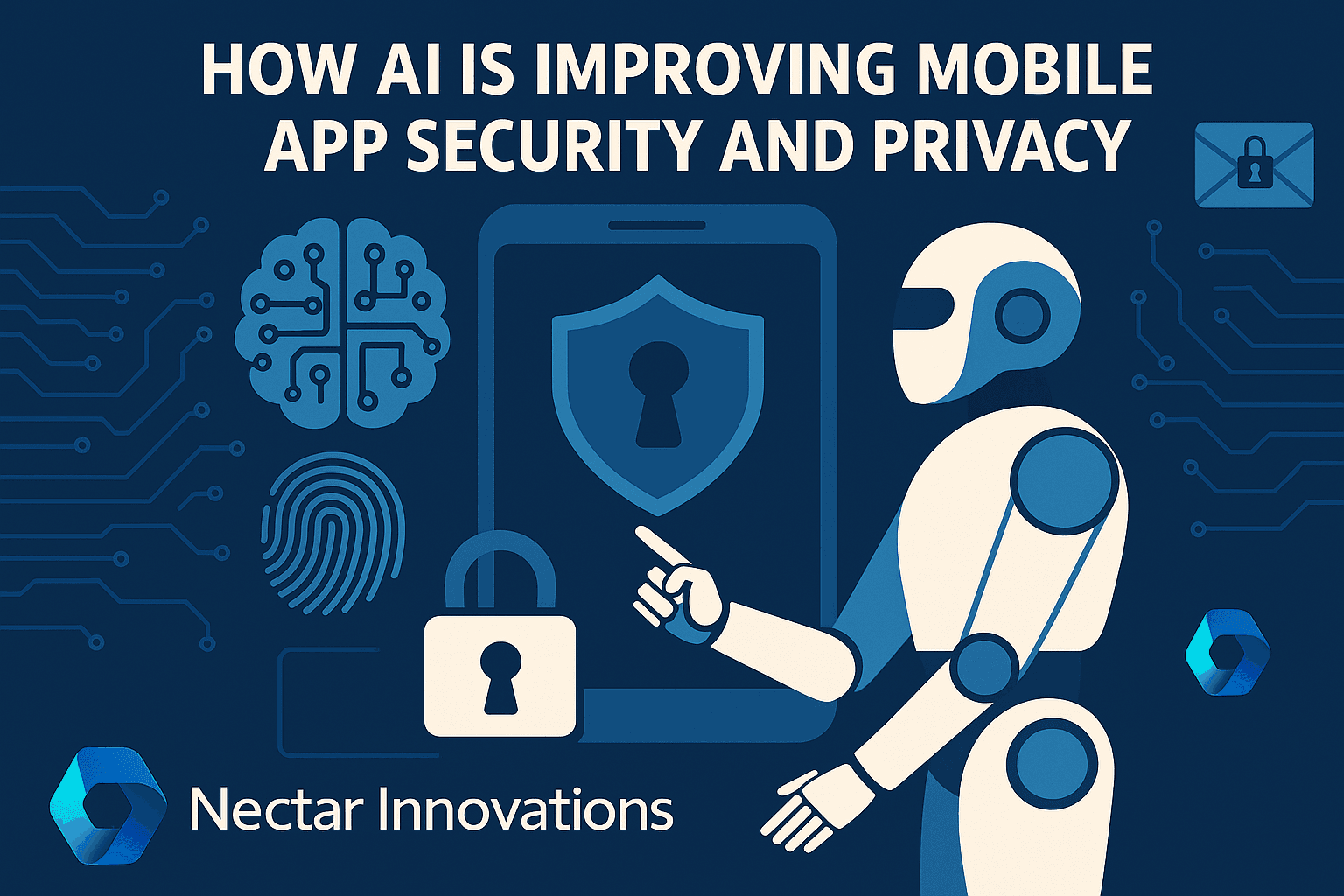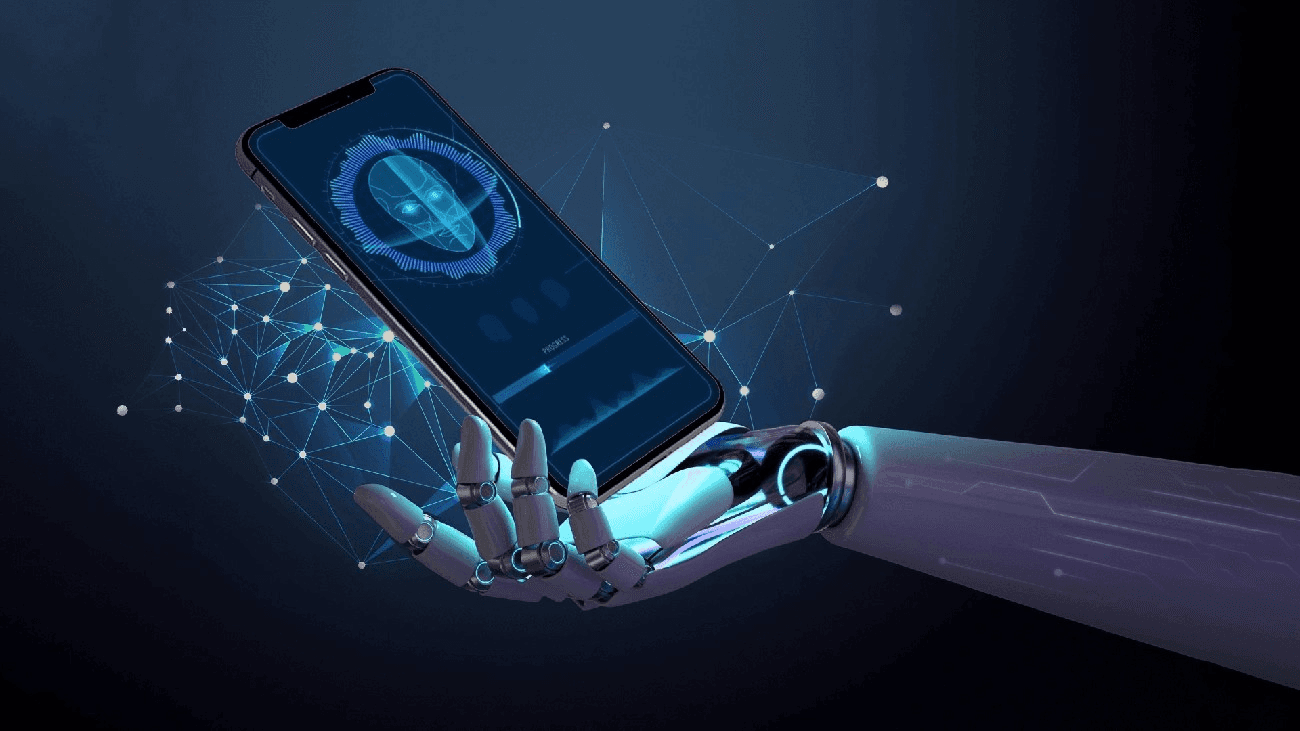AI technology revolutionizes mobile apps and reshapes the scene at a remarkable speed. Grand View Research projects the global mobile AI market will surge from USD 16.03 billion in 2023 to USD 85 billion by 2030, showing a CAGR of 26.9%. These numbers make sense as AI could generate up to $1 trillion in yearly value, with much of it flowing straight into mobile experiences.
The mobile app landscape will look vastly different by 2025. AI technologies will redefine how people use their smartphones. Smart applications will become more customized and accessible. Mobile app developers now embrace these technologies because they enable instant customer support through AI chatbots. The technology also helps predict what users will do next by studying their past behavior. AI enhances app development through deep customization of user experiences. The result is more engaging apps that offer instant recommendations and adapt to each user. This piece reveals the secrets top developers keep about AI in mobile app development and shows how these hidden gems will mold tomorrow's mobile experiences.
AI Capabilities That Are Reshaping Mobile Apps in 2025

"Mobile experiences are transforming through AI capabilities that were once impossible without cloud connectivity in 2025. Users now interact with their devices in new ways that are more responsive and create individual-specific experiences.
- Real-time personalization using on-device ML
On-device machine learning has transformed personalization by moving computation from remote servers directly to smartphones. Edge computing delivers faster and more private experiences. Users get instant responses in milliseconds, better privacy protection as data stays on their device, offline functionality without internet access, and lower server costs.
Several elements power on-device personalization technology:
- Optimized AI frameworks like TensorFlow Lite, CoreML, and MLKit run efficiently on mobile hardware
- Model compression techniques include quantization and pruning
- Hardware acceleration through dedicated Neural Processing Units (NPUs)
- Federated learning approaches protect data privacy
Contextual awareness makes this capability unique. On-device AI analyzes user behavior instantly by looking at location, time, weather, recent interaction patterns, and priorities—all processed privately on the device. Companies using these technologies report strong results: session duration grows 27-35%, conversion rates improve 18-24%, and retention rates climb 15-22%.
- Voice and image recognition for hands-free interaction
Voice assistant market value hit USD 3.5 billion in 2021 and will likely reach USD 30.72 billion by 2030, showing a compound annual growth rate of 31.2%. These numbers reflect users' need for simpler ways to interact with technology. About 26% of U.S. adults currently use or plan to use AI-powered voice assistants on their smartphones.
Voice recognition in mobile applications brings several benefits:
- Hands-free functionality helps users with limited mobility
- Natural language interactions feel conversational
- Accessibility features support users with disabilities
Image recognition capabilities now go way beyond simple object detection. Mobile apps let users snap pictures to find similar items, spot landmarks, try makeup virtually, preview furniture in their homes, and check workout form. ML Kit powers these features with image labeling, selfie segmentation, and digital ink recognition that spots handwritten text in more than 300 languages.
- Emotion-aware interfaces using sentiment analysis
Emotionally adaptive user interfaces respond to users' feelings, marking a breakthrough development. Multiple data sources help these systems understand emotional states:
- Computer vision tracks facial expressions
- Systems analyze voice tone and speech patterns
- Text sentiment and interaction behaviors like typing speed reveal emotions
Apps can change their interfaces dynamically by detecting emotions instantly—adjusting visual elements, changing content presentation, or modifying interaction patterns. A customer support chatbot might escalate issues to human agents or adopt a calmer tone when it detects rising frustration.
Emotion-aware interfaces do more than improve user satisfaction. They reduce cognitive load, cut down frustration, and build emotional connections between users and applications. Healthcare apps can spot distress and offer support, while educational software identifies confusion and provides extra help.
Privacy and secure handling of sensitive emotional data remain vital ethical considerations. Finding the right balance between personalization and privacy will determine how widely people adopt these technologies.
Core AI Technologies Powering Mobile App Innovation
AI innovation in mobile apps builds on specialized frameworks that run sophisticated models right on our smartphones. These technologies strike a balance between processing power and device limits while keeping user data private.
- TensorFlow Lite for on-device model inference
Google's TensorFlow Lite offers a lightweight solution to deploy machine learning models on mobile platforms. Developers can compress and optimize models to run efficiently on devices with limited resources. The framework now lets apps fine-tune models based on user interactions without internet connectivity. Apps can adapt to each user's needs over time - like identifying specific bird species or fruits based on their priorities.
- Core ML integration in iOS for privacy-first AI
Apple's Core ML framework plays a vital role in iOS development by providing a unified API for machine learning tasks that keeps data on the device. It uses Apple silicon's powerful compute features to distribute workloads across CPU, GPU, and Neural Engine components. iOS 18 brought major speed improvements to the inference stack, delivering faster predictions without model recompilation or code changes.
Core ML's new MLTensor makes complex computations simpler in machine learning workflows. It also handles stateful models better, which cuts down overhead and speeds up inference. Apple Intelligence extends device processing through Private Cloud Compute for tasks that need more computing power. This system uses larger server-based models on Apple silicon while protecting privacy. Even when processing happens off-device, Apple cannot access or store the data—it only processes specific user requests.
- ML Kit APIs for text, face, and object detection
ML Kit brings Google's machine learning power to Android and iOS through simple vision and natural language APIs. These functions work right on the device, which enables real-time processing without internet. Developers get pre-built APIs for text recognition, face detection with landmark and contour identification, barcode scanning, and object detection with tracking.
ML Kit's object detection and tracking API identifies and follows objects in real-time through image frames—even on basic devices. The system spots the main object in an image and groups objects into categories like home goods, fashion goods, food, plants, and places.
- Generative AI with Gemini Nano for content creation
Gemini Nano stands as Google's most efficient on-device AI model, built specifically for mobile devices. It runs through Android's AICore system service and powers generative AI features without needing networks or cloud processing. The latest experimental version (Nano 2) shows big quality improvements. Its performance on academic standards jumped from 46% to 56% on MMLU tests and from 14% to 23% on MATH evaluations.
This approach keeps sensitive data on your device, works offline, and helps developers avoid extra costs for each operation. Text rephrasing, smart replies, proofreading, and document summarization are some key features that power next-generation mobile experiences.
How AI Is Improving Mobile App Security and Privacy

Security concerns are growing as mobile applications become more popular. AI in mobile apps is creating reliable protection for users and developers in 2025.
- Biometric authentication using facial and fingerprint recognition
Today's smartphones use AI-powered biometric systems that provide secure user authentication. These systems don't just compare exact values like traditional PINs or passwords - they analyze probability thresholds between stored samples and new scans. Face ID on iOS devices projects a complex pattern of infrared dots to capture unique facial features. Touch ID scans fingerprints through capacitive sensors.
Apple's security statistics are impressive. The chance of a random person unlocking your iPhone with Face ID is less than 1 in 1,000,000. Modern devices also include "liveness" checks that prevent attacks using photographs or masks.
The most crucial aspect is that biometric data processing happens within secure hardware enclaves like Apple's Secure Enclave. This ensures that sensitive information stays on the device. Such a privacy-first approach meets GDPR requirements while giving users a smooth experience.
- Behavioral anomaly detection for fraud prevention
AI now understands your app interaction patterns beyond just recognizing who you are. Behavioral analytics tracks patterns like typing rhythm, swipe gestures, and transaction habits to build a unique "behavioral profile". This security layer works quietly in the background.
Here's a real-life example: A finance app user tries to log in at 2 a.m. from an unknown location. Standard security might overlook this, but AI-powered anomaly detection immediately checks this against normal behavior patterns and marks it as suspicious.
These systems are great at spotting subtle signs of fraud. This reduces false positives by a lot, letting security teams focus on real threats. Research shows that anomaly detection models keep learning from new transaction data, making them better at fighting emerging threats live.
- AI-driven code scanning for vulnerability detection
AI is changing how developers find security vulnerabilities before apps reach users. A team from Nanjing University and the University of Sydney created a framework called A2 that uses AI to find and confirm vulnerabilities in Android applications.
The system found 57 real security defects while testing 160 real-life APKs. It works like human security experts by first analyzing code semantically, then trying to exploit potential weaknesses.
Machine learning systems excel at scanning large codebases. They can spot insecure libraries, risky API calls, and hidden vulnerabilities that regular testing might miss. These tools get better as they learn from new threat patterns, which makes mobile app security stronger with each update.
AI Tools Developers Are Using (But Rarely Talk About)

Many specialized AI tools have become vital for developers. These tools remain mostly undiscussed in public forums, unlike the general frameworks we covered before.
- PyTorch Mobile for dynamic model deployment
PyTorch Mobile lets developers deploy machine learning models right on mobile devices. Its support for dynamic computation graphs makes it special. Developers can modify models while they run - perfect for research and testing. Facebook announced they won't support it actively anymore (ExecuTorch will replace it). Yet many developers still use it when they need to keep sensitive data on the device. PyTorch Mobile can reduce model sizes through quantization and pruning. These features help deploy models on mobile devices efficiently.
- Dialogflow for conversational AI in apps
Dialogflow is Google's natural language platform that makes creating conversational interfaces easier. The platform processes text or audio inputs well and responds with text or synthetic speech. Developers love Dialogflow's context management system. It remembers previous conversations and enables natural interactions across different channels. Ready-made agents for common tasks like flight booking or product queries help speed up development.
- Google AI Studio for Gemini model prototyping
Google AI Studio gives developers the quickest way to prototype with Gemini, Google's next-generation multimodal AI models. Developers test prompts right in their browsers and get free API keys to start development. Google AI Studio templates come with all the Gemini API infrastructure needed for mobile workflows. These templates work with JavaScript and Python, and more languages will be added soon.
- LangChain for chaining LLMs in mobile workflows
LangChain is an open-source framework that helps developers arrange complex workflows with Large Language Models. It breaks tasks into smaller parts and creates chains of prompt operations that work better and faster. Developers can connect LLMs to external data sources, APIs, and tools without exposing sensitive information. Mobile apps that need user privacy while using powerful language models find this framework particularly useful.
Challenges Developers Face When Using AI in Mobile Apps

AI implementation in mobile apps creates technical challenges that rarely make headlines. Behind every sleek AI feature lies a complex set of problems that need creative solutions.
- Model optimization for low-memory devices
Mobile developers must balance performance with resource limits. AI models use too much memory and processing power, which makes them impractical for regular devices. Standard deep learning models with 32-bit floating-point numbers need substantial computational resources. Developers must use techniques like quantization that can reduce model size by 75% or more. They also use pruning to remove neural network connections that don't contribute much to results. These optimizations trade accuracy for efficiency, which creates tough choices.
- Bias in training data and ethical concerns
Ethical implications of AI go beyond technical aspects. AI systems learn from biased historical data and make existing inequalities worse. MIT researchers discovered that AI systems couldn't predict mortality risk from chest X-rays as accurately for Black patients compared to white patients. Creating fair systems needs careful review of training data. Teams must refine models to stop discrimination based on race, gender, and socioeconomic status.
- Data privacy compliance across regions
The scattered regulatory landscape creates another big challenge. More than 120 countries now enforce data regulations. Companies face fines up to €20 million or 4% of revenue if they don't comply. AI startups must follow different privacy rules like GDPR (EU), CCPA/CPRA (California), PIPL (China), and LGPD (Brazil). US states introduced almost 700 different AI bills in 2024 alone. This creates an ever-changing compliance puzzle.
- Maintaining model accuracy over time
AI models face "model drift" as their performance drops when conditions change. Teams must watch and update systems to ensure ethical behavior. Models become less reliable or more biased without proper monitoring. Teams need drift detection through statistical tests, shadow models, and specialized algorithms. Regular retraining helps maintain accuracy as conditions evolve.
Conclusion
This piece explores how AI revolutionizes
mobile app development and changes user interactions with their devices. The market's explosive growth from $16 billion to $85 billion by 2030 shows AI's massive effect on future mobile experiences.
Game-changing capabilities like real-time customization, voice recognition, and emotion-aware interfaces create responsive mobile experiences. These technologies process data on users' devices to enhance privacy and deliver quick responses.
TensorFlow Lite, Core ML, and ML Kit have become vital tools that balance computing needs with device constraints. Gemini Nano enables on-device generative AI without network dependency - a breakthrough for mobile experiences.
AI brings major benefits to security. Biometric authentication, behavioral anomaly detection, and AI-driven code scanning create adaptable protection systems against new threats.
Developers face serious challenges behind these advances. Resource optimization, data bias issues, regional privacy laws, and accuracy maintenance need creative solutions and constant attention.
PyTorch Mobile, Dialogflow, Google AI Studio, and LangChain demonstrate how developers blend technologies to create smooth AI experiences while protecting user's privacy.
The future promises sophisticated on-device AI as hardware evolves. Cloud-based and on-device AI will become more similar, opening doors for new mobile apps that combine intelligence with privacy.
Mobile developers who excel at these AI technologies while solving challenges will lead innovation. Their work will define billions of people's daily tech interactions, making AI the cornerstone of mobile experiences in 2025 and beyond.
Key Takeaways
The mobile AI market is exploding with unprecedented growth and hidden opportunities that top developers are leveraging to create next-generation experiences.
- On-device AI processing eliminates cloud dependency - Real-time personalization, voice recognition, and emotion-aware interfaces now run directly on smartphones, delivering instant responses while protecting user privacy.
- Specialized frameworks like TensorFlow Lite and Core ML enable powerful mobile AI - These tools balance computational demands with device limitations, making sophisticated AI features accessible on resource-constrained devices.
- AI-powered security goes beyond biometrics - Behavioral anomaly detection and AI-driven code scanning create adaptive protection systems that continuously learn and evolve against emerging threats.
- Hidden developer tools accelerate AI implementation - PyTorch Mobile, Dialogflow, Google AI Studio, and LangChain provide specialized capabilities that experienced developers use but rarely discuss publicly.
- Model optimization and privacy compliance remain critical challenges - Developers must navigate memory constraints, data bias issues, fragmented regulations, and model drift while maintaining accuracy and ethical standards.
The future belongs to developers who master these AI technologies while addressing their inherent challenges, creating mobile experiences that seamlessly blend intelligence with privacy protection.





